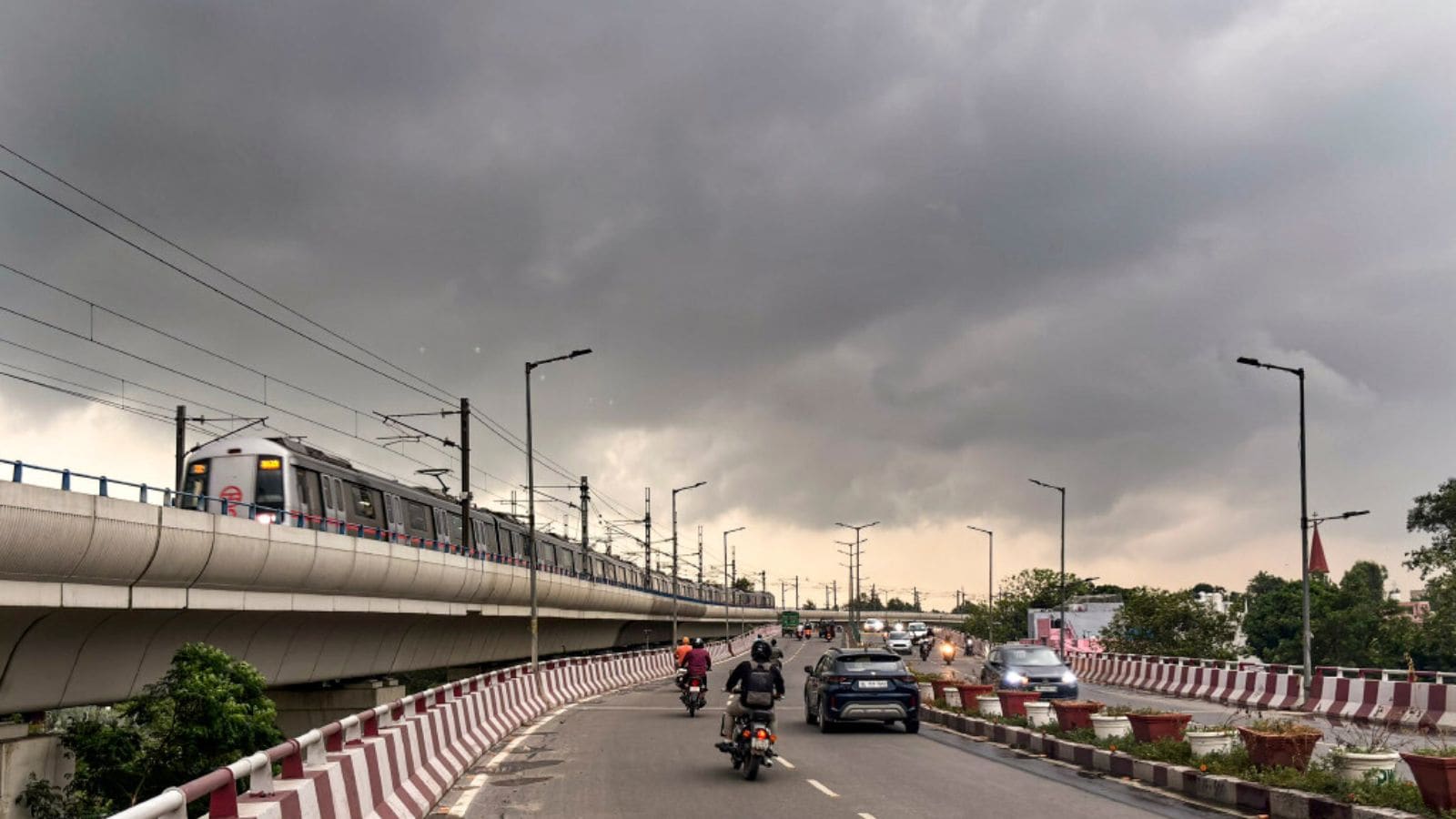For the past two days, the skies of Delhi-NCR have remained stubbornly overcast. Grey clouds loom above, humidity clings to the air, but rain remains a no-show. Even when it does drizzle, the showers are patchy and fleeting. The phenomenon has left many residents puzzled: if the clouds are clearly here, why isn’t the rain?
According to the India Meteorological Department (IMD), a thick cloud cover hovered over Delhi-NCR on Wednesday, accompanied by high humidity levels. Yet, “there is no forecast of any major rainfall,” officials noted. Tuesday, June 24, presented a similar picture; humid, cloudy, but largely dry. Thursday morning might bring brief light rain, but unless the atmospheric dynamics shift, the skies are expected to remain waterless. A more significant change may occur on Friday.
Despite the presence of dark clouds, meteorologists say they simply do not have the strength to pour. “The wind direction, moisture levels, and local environment are not aligned to trigger a complete rain event,” an official explained.
So, what’s holding back the rain?
Despite how ominous they look, clouds don’t always bring rainfall. Meteorologically, there are several explanations for this frustrating phenomenon:
1. Insufficient Moisture Accumulation
The water droplets in the clouds do not mix together until their size and number becomes so much that a situation is created for them to fall down due to gravity, explained an expert. In lay terms, the clouds over Delhi simply lack the weight; scientifically, the ‘gravitational-thunderous capacity’ to unleash a downpour.
2. Delhi’s Landlocked Geography
Delhi is a landlocked area where moisture does not come continuously from the sea, the IMD explained. Unlike coastal cities, Delhi lacks a consistent source of moisture-laden winds, making it harder for cloud systems to stay saturated long enough to generate rain.
3. Misaligned Monsoon Trough
Currently, the monsoon low-pressure belt is positioned to the south of Delhi. This geographical shift has led to low monsoon activity in the region. While clouds drift in, they lack the monsoonal support system needed to produce precipitation.
4. High-Altitude Dry Air and Urban Heat
Delhi’s weather remains unstable due to “strong winds, dry air at high altitudes, and urban heat centres”. These factors disrupt the vertical development of clouds and limit their rain-producing potential. As a result, the skies remain thick with promise, but deliver little.
5. Inversion Layers and Atmospheric Blocks
If the air in the upper atmosphere is very cold or too light, then it keeps the clouds up. It does not allow rain, scientists explained. Occasionally, an inversion layer near the stratosphere can act like a ceiling, preventing cloud systems from expanding downward and releasing rain.
6. Dry Air Intrusion
Sometimes, dry air at upper levels seeps into the system, evaporating moisture within the clouds before it can coalesce into rain. This “dry air effect” is another common rain-killer over NCR.
7. Turbulent Wind Flows
Large differences in wind direction and speed at various altitudes can tear cloud systems apart. “If there is a lot of difference in the direction and speed of the wind at different heights… it prevents the clouds from bursting and gathering at one place,” said a report.
8. Lack of Orographic Support
Unlike mountainous regions, Delhi and surrounding plains offer no topographical push to lift clouds upward, cool them, and prompt rainfall. In hilly regions, clouds collide with terrain, condense, and rain. But on flat land, they often linger and disperse.
9. Weak Low-Pressure Systems
Even when clouds gather, they may lack the energy to rain. It does not rain until the atmospheric conditions like humidity, temperature, wind direction and pressure become favourable, said experts.
Rain in Sight?
There is some hope on the horizon. Between June 26 and 29, light showers and mild storms are expected across several north Indian states, including Delhi. “There is a good possibility of some rain in the coming days when the monsoon becomes active,” the IMD said. But residents may have to endure another spell of oppressive humidity before they get relief.
Delhi isn’t alone in facing this frustrating weather pattern. Other regions across India also frequently see cloudy skies that do not culminate in rainfall:
1. Haryana and Western Uttar Pradesh (including Gurugram, Faridabad, Meerut, Noida): Like Delhi, these areas fall prey to the same atmospheric mismatches. The clouds disperse due to the conflict between atmospheric pressure and wind direction.
2. Eastern and Northern Rajasthan (Jaipur, Alwar, Bharatpur): Being on the marginal belt of the monsoon, clouds form here but rarely convert to rain due to low humidity and hot, dry winds.
3. Vidarbha (Eastern Maharashtra): Cities like Nagpur, Amravati, and Akola often witness cloud cover during monsoon. But thanks to local heat and shifting winds, rainfall remains elusive.
4. Kutch (Gujarat): Despite persistent clouds, the region sees limited rain due to extreme heat and low moisture content.
5. Western and Central Tamil Nadu (e.g., Madurai, Salem): Here, the southwest monsoon rains out most of its moisture on the Western Ghats, leaving little for the plains beyond. As a result, rain clouds arrive, but deliver only visual drama.
So, the answer to the question many in Delhi are asking, “why isn’t it raining despite all these clouds?” lies in a combination of geographical, atmospheric, and meteorological factors.
